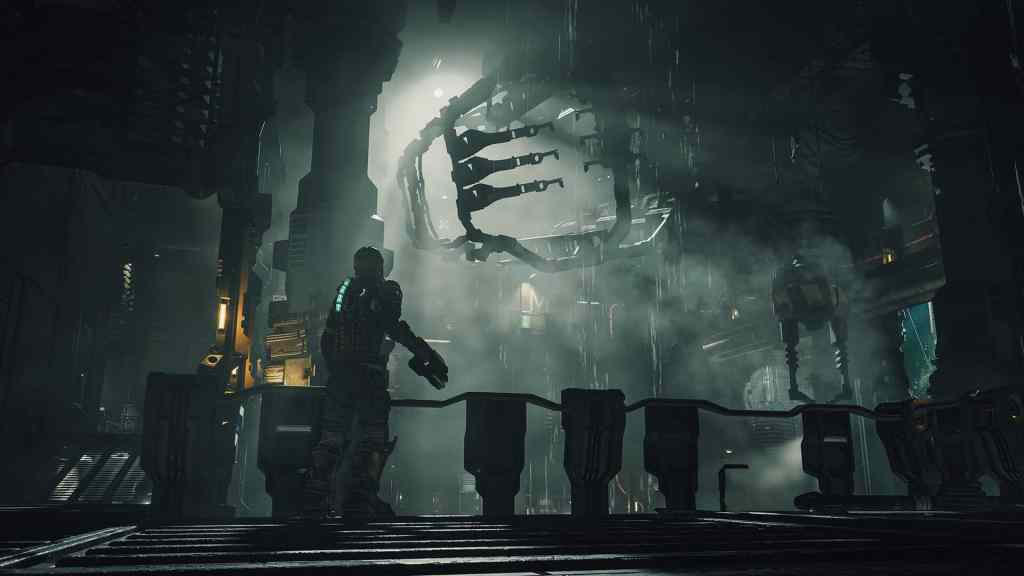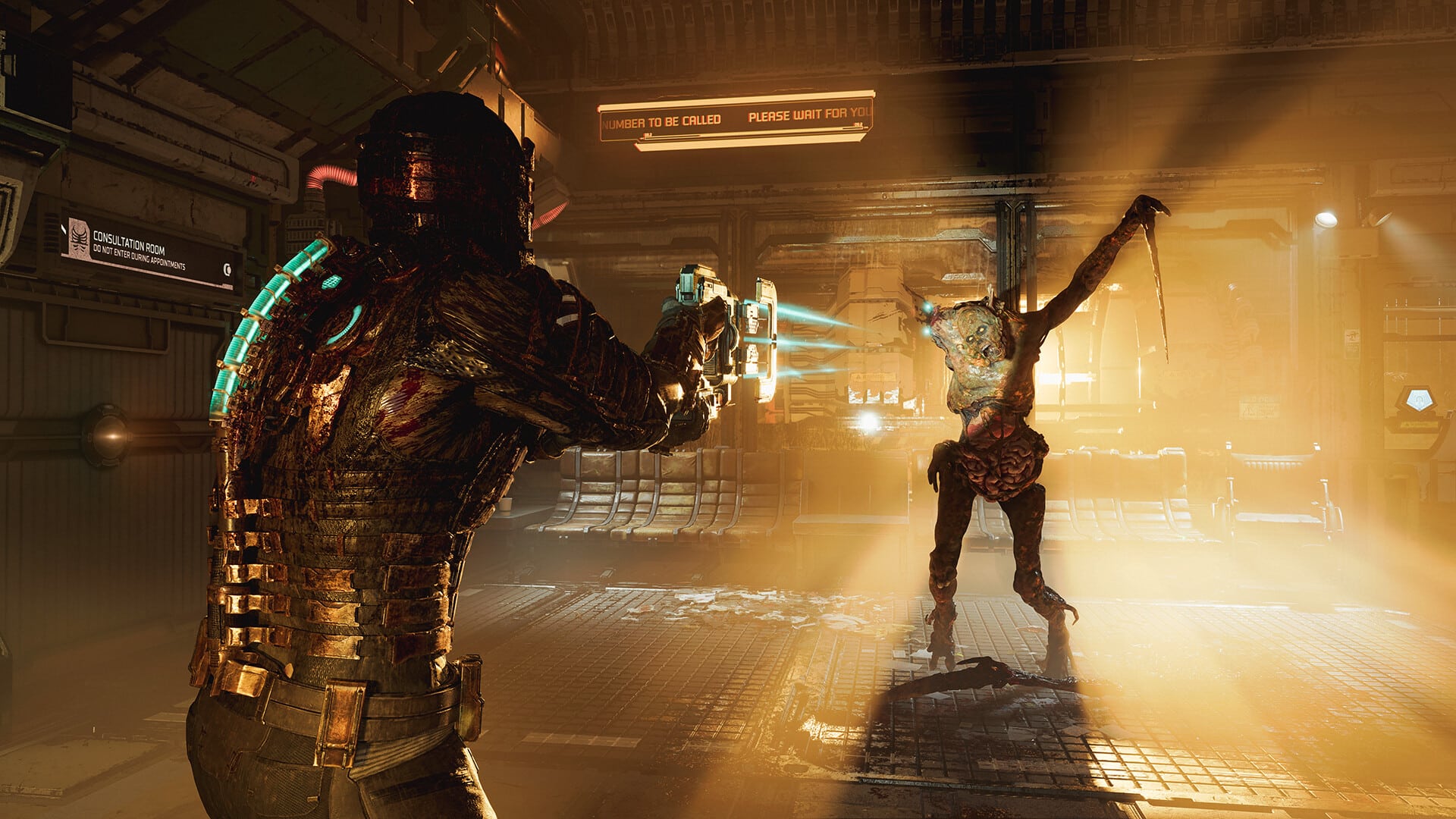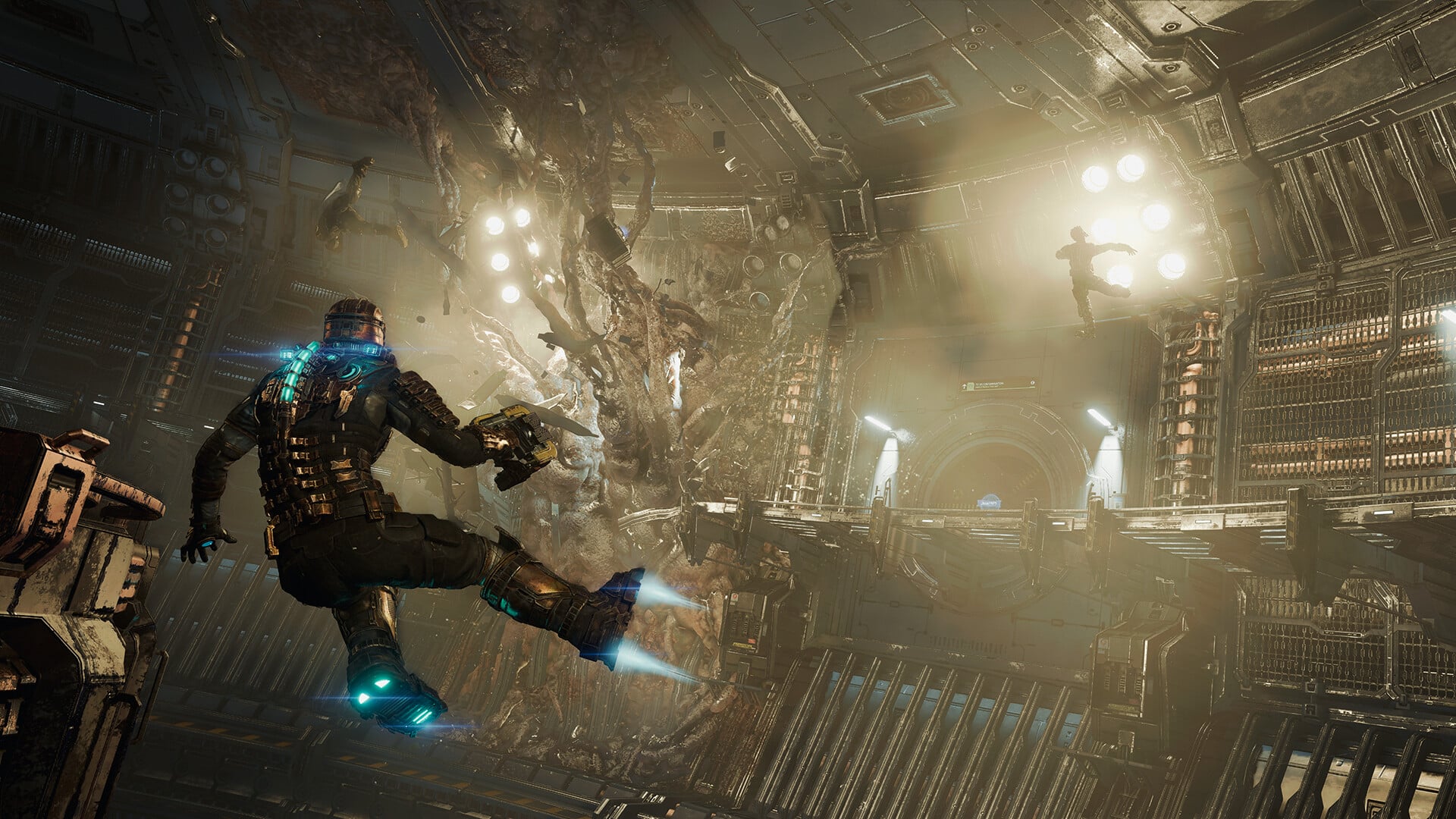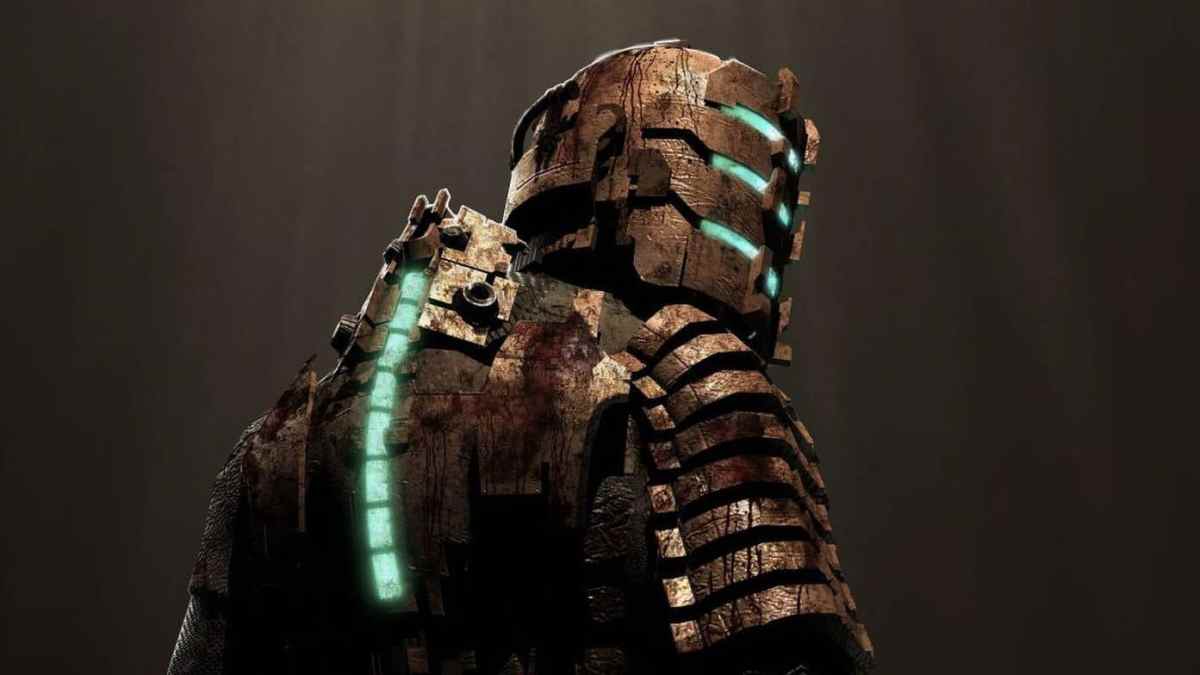Without sounding too flippant, it has to be said how easy the job of a Dead Space remake seems from a casual observer’s perspective. Here is the originator of quite possibly the most beloved horror franchise of the 2000s and early 2010s. A meshing of satisfying, scary, empowering and atmospheric systems all coalescing into an impressive, elegant statement of cosmic and body horror; a title that planted about as solid a flag as you can on a vision of the future of horror games.
Having played the original 2008 release in preparation for the remake, it’s shocking just how modern it feels; a vision with a confidence and clarity we just don’t see as often in video games anymore. The expert pacing of its opening hours, the core-gameplay loop wound as tight as can be, and one of the most satisfying stomps in video game history. The original Dead Space is such a masterclass of intense atmosphere, varied yet balanced gameplay systems, and satisfying exploration that its remake barely has to change a thing at all beyond a streamlined and ‘loading screen-free’ interpretation of its world.

Read: The Callisto Protocol review – We’ve seen this gore before
The Ishimura; the ill-fated ‘planet cracker’ mining ship which provides the staging ground for Dead Space isn’t one of the most unique environments in horror games – if you listed off generic scary places for a video game you’d hit ‘monster-infected spaceship’ pretty quickly. But the original Dead Space’s appreciation for sound design and atmospheric lighting raised the bar significantly for how effective those tools can be when scaring the shit out of people, as they skulk around a floating tin can far off in the cosmos somewhere.
Dead Space (2023) has hung on to this lesson well, with the vast majority of what’s new here being a completely overhauled visual engine, a deeper and more intricate approach to sound design, and minimal changes overall to the layout of the Ishimura itself.
The far more dramatic implementation of light and shadow in the Dead Space remake (alongside improvements in textures and overall detail) manages to keep you on your toes, even though the general shape of the game is the same. Playing on a High Dynamic Range (HDR) enabled screen increases this effect even moreso, with the inky blacks of the Ishimura’s forgotten and massacred depths providing little solace where they’re rendered with such detail. I often forget the narrative detail of the long leadup to madness that the crew of the Ishimura experienced, even before people started becoming monstrosities, long before you set foot on it, but wandering around its halls in this remake brings its protracted catastrophe into an even greater detail than before.

Narratively, there are some minor reinterpretations of the script which mainly play out through character interactions. An added detail here, a shift in tone there. The main crew of survivors are more collaborative this time around, less quick to point fingers and undermine each other across the radio while protagonist Isaac Clarke gets to work actually solving the myriad disasters unfolding on the Ishimura. The vastly improved facial animations that play out while your compatriots dole out tasks to you across video calls did most of the heavy lifting to endear me to my little band of survivors.
The few systemic changes that Motive, the developers behind this remaster, have folded into the game can be categorised as ‘perfectly fine’ to ‘largely irrelevant’, however. The ‘Intensity Director’, a sort of randomised encounter generator which supposedly has upwards of 1000 possible actions it could take at any given time – including sound cues and enemy attacks – often made benign choices such as having a single enemy standing in a large room or at the end of a long hallway as I entered it, or having vents randomly shatter open for seemingly no reason. It’s probable that Motive used this system in order to build out the game’s more bespoke sequences or scares too, and while it’s helpful to have a sense of danger as you trudge from one set-piece to another, the implementation is largely flat and unremarkable.

A more obvious and positive change of the remake is the revamping of the original Dead Space’s zero-g movement, doing away with its strange ‘aim and dive’ navigation in favour of the multi-axis flying that was present in later entries in the series.
It can’t be overstated just how much a Dead Space remake always seemed like a sure thing, and after my time with it, that perspective hasn’t changed. It’s easily one of the best modern horror games, and the fresh lick of paint to really bring its grimy, snarling interpretation of sci-fi horror into sharp new relief is very welcome, especially when it maintains such faith in the source material.
4 Stars: ★★★★
Dead Space (2023)
Platforms: PC, PlayStation 5, Xbox Series X/S
Developer: Motive Studio
Publisher: Electronic Arts
Release Date: 27 January 2023
A PC copy of Dead Space (2023) was provided and played for the purposes of this review. GamesHub has affiliate partnerships. These do not influence editorial content. GamesHub may earn a small percentage of commission for products purchased via affiliate links.





